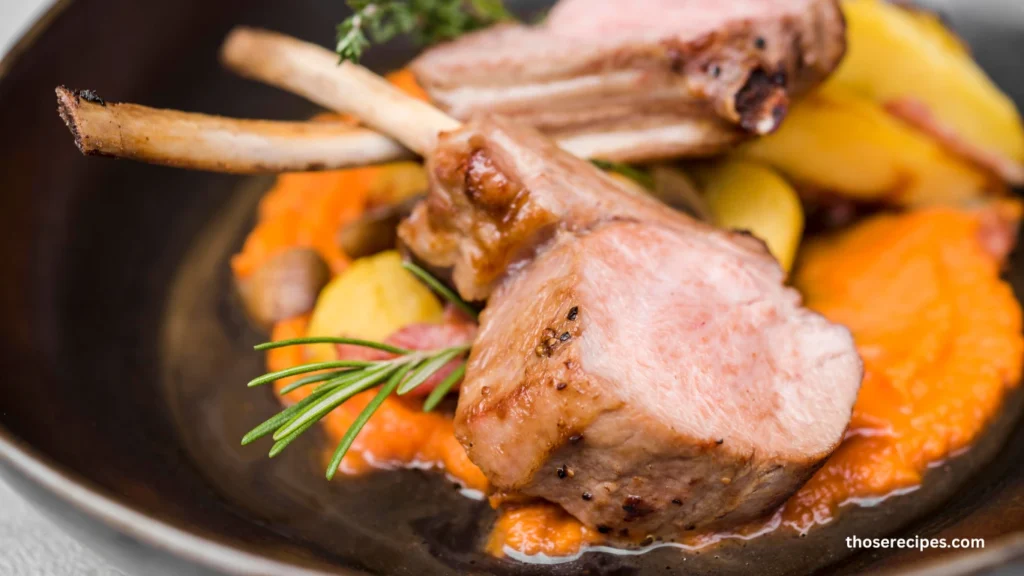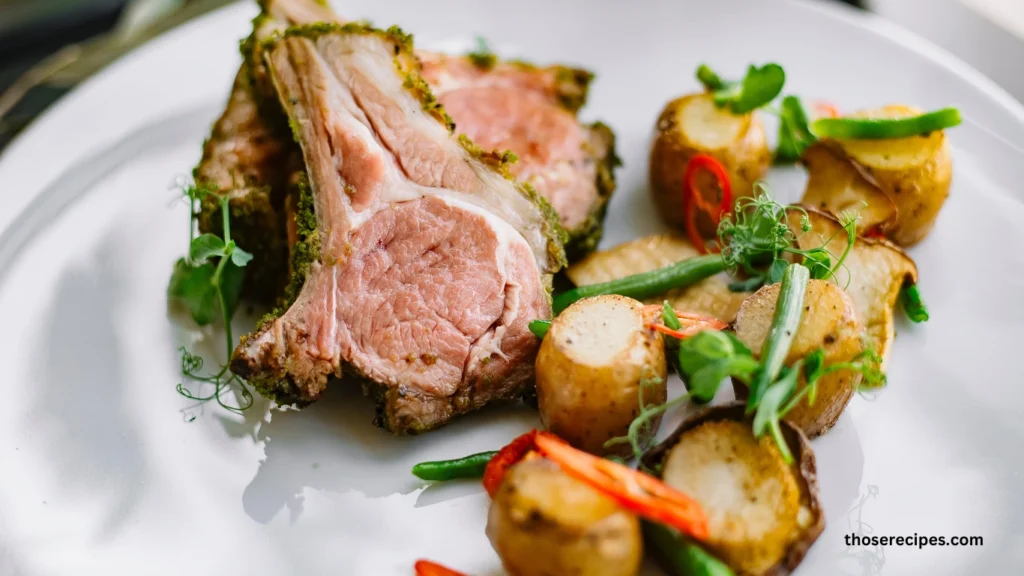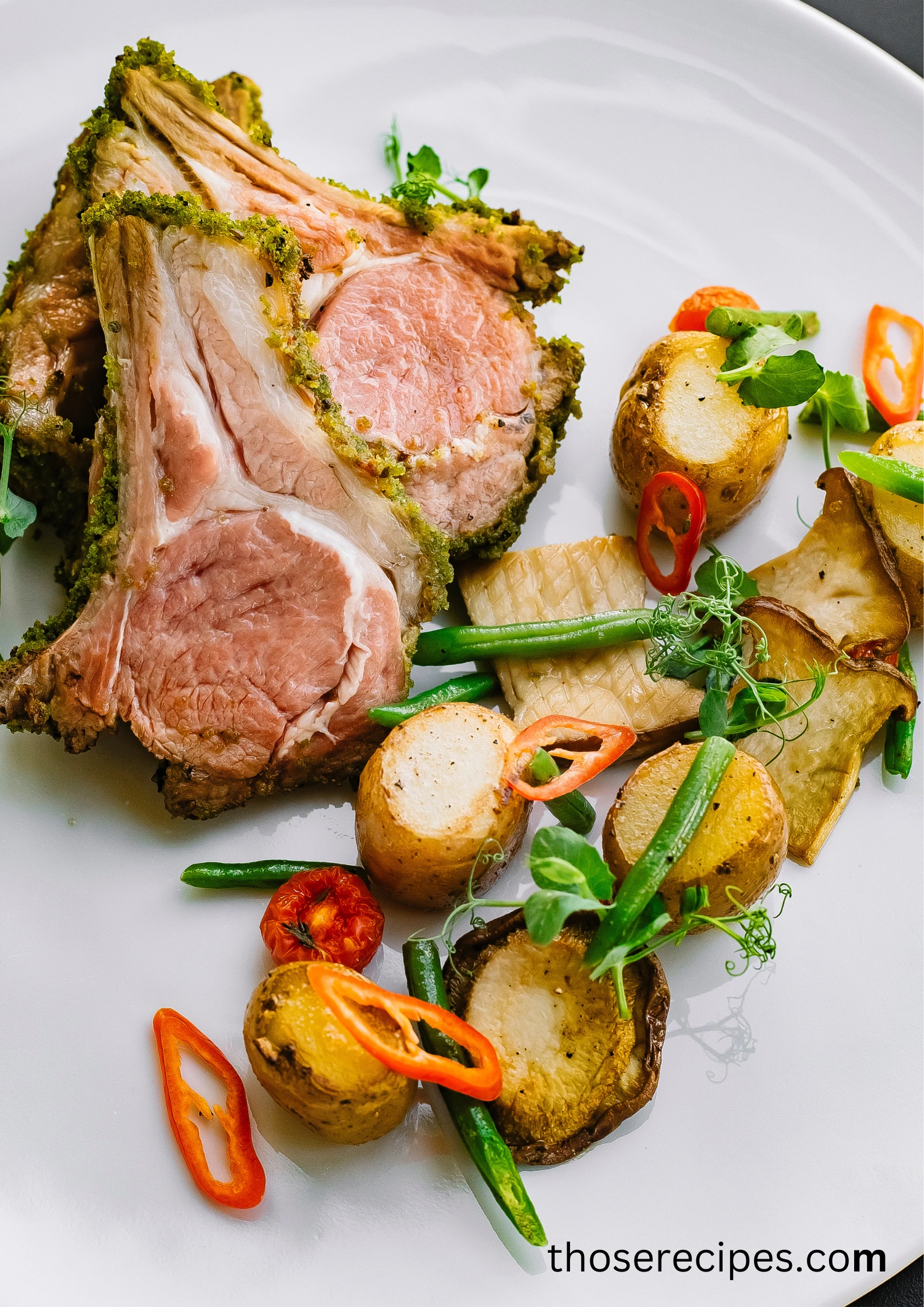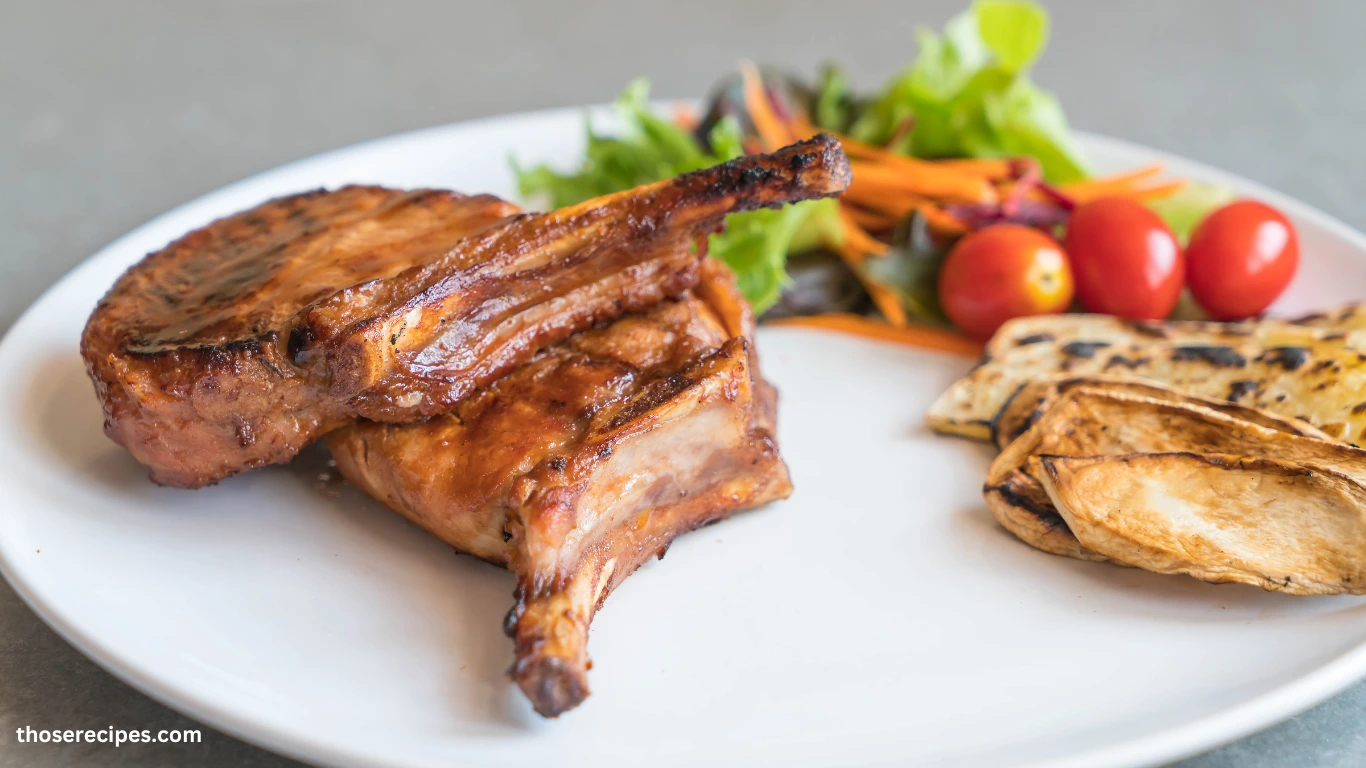Table of Contents
The Delicacy of the Sky: A Journey into Sandhill Crane Meat
Imagine standing at the edge of a vast wetland, the early morning mist still hanging in the air. In the distance, a flock of majestic sandhill cranes lifts into the sky, their calls echoing as they glide effortlessly toward the horizon. To many, these birds are simply a breathtaking part of nature. But for some, they represent something even more extraordinary—an unforgettable culinary experience.
For centuries, indigenous cultures and adventurous hunters have known about the unique flavor and texture of sandhill crane meat. Often called the “ribeye of the sky,” this meat is a delicacy that’s starting to gain recognition in kitchens across North America.
Whether you’re a seasoned hunter, a food enthusiast, or simply someone looking to explore something new, here’s why sandhill crane meat should be on your radar.
Why Sandhill Crane Meat is Special:
- Unique Flavor: Combines the tenderness of beef with a hint of duck-like richness, but without the gaminess.
- Lean and Nutritious: Packed with high-quality protein, iron, and B vitamins—making it both tasty and healthy.
- A Sustainable Choice: Harvested under strict regulations to ensure healthy crane populations.
What to Expect:

- Exquisite Texture: Naturally tender and juicy, making it ideal for various cooking methods.
- Versatile Ingredient: Perfect for grilling, pan-searing, or smoking—allowing you to get creative in the kitchen.
In the following sections, we’ll explore everything you need to know about this incredible meat—from its origins to the best recipes, tips for sourcing, and ethical considerations. Join us as we delve into the world of sandhill crane meat and discover why so many are calling it the next great culinary treasure.
What is Sandhill Crane Meat?
Sandhill crane meat comes from the sandhill crane, a majestic bird native to North America, parts of Siberia, and Cuba. Known for its elegance and distinctive calls, the sandhill crane is not just a wonder of nature but also a unique and flavorful game meat.
Unique Characteristics of Sandhill Crane Meat
Sandhill crane meat offers a combination of flavors and textures that set it apart from other wild meats. Here’s what makes it special:
- Tender Texture: Unlike some game meats that can be tough, sandhill crane meat is naturally tender, making it easy to cook and enjoy.
- Mild Flavor: Often compared to a high-quality beef steak, it lacks the strong, gamey taste commonly associated with wild meats.
- Nutrient-Rich: This lean meat is an excellent source of protein, iron, and B vitamins, offering health benefits without the high-fat content of traditional cuts of beef.
The Appeal of Sandhill Crane Meat
For adventurous eaters and culinary explorers, sandhill crane meat provides a distinct and memorable flavor experience. Whether you’re grilling, pan-searing, or experimenting with new recipes, it’s an exciting meat to cook with.
- Rich in Protein: Perfect for those looking to maintain or build muscle.
- Low in Fat: A healthier alternative to other meats, particularly beef.
- Versatile Ingredient: Easily adapts to various cooking styles, from simple seasoning to more complex marinades.
Flavor Profile and Culinary Appeal
Sandhill crane meat has a unique flavor profile that sets it apart from other game meats, making it a sought-after delicacy for both chefs and home cooks alike.
What Does Sandhill Crane Meat Taste Like?

When it comes to flavor, sandhill crane meat offers a balance that appeals to a wide range of tastes:
- Beef-Like Richness: Many describe the flavor as similar to a high-quality steak, with a rich, satisfying taste that’s not overly gamey.
- Subtle Duck Undertones: While it shares some characteristics with duck, such as a slight sweetness, it doesn’t carry the strong, often overpowering gaminess.
- Earthy and Savory: The natural diet of sandhill cranes—grains, seeds, and small aquatic creatures—infuses the meat with a unique, earthy taste.
Why Is Sandhill Crane Meat So Appealing?
Its flavor profile and texture make sandhill crane meat versatile in the kitchen, appealing to those seeking a premium game meat:
- Tender Texture: The meat is naturally tender and juicy, ideal for quick cooking methods like grilling or pan-searing.
- Versatility: Whether grilled, smoked, or seared, sandhill crane meat pairs well with simple seasonings like salt, pepper, and fresh herbs, allowing its natural flavor to shine.
- Impressive Dining Experience: The rich, steak-like qualities of the meat make it a standout at any meal, elevating dishes to a gourmet level.
How to Source Sandhill Crane Meat
Sourcing sandhill crane meat requires careful attention to ethical and legal considerations, as well as knowing where to find this unique delicacy.
Ethical and Legal Considerations
Before sourcing sandhill crane meat, it’s crucial to understand the legal regulations surrounding its harvest:
- Hunting Regulations: Sandhill cranes are protected by laws such as the Migratory Bird Treaty Act. Hunting them is regulated by seasons and quotas, ensuring sustainable populations.
- Permits: Hunters must obtain specific permits to legally hunt sandhill cranes, with some regions requiring special stamps or licenses, such as the Federal Migratory Bird Hunting and Conservation Stamp.
- Ethical Sourcing: When purchasing sandhill crane meat, ensure it comes from licensed, ethical hunters or reputable suppliers that follow legal guidelines for sustainable hunting practices.
Where to Buy Sandhill Crane Meat
Finding sandhill crane meat may require some effort, as it is not commonly found in typical grocery stores:
- Specialty Game Meat Suppliers: These suppliers often work with licensed hunters to provide ethically sourced sandhill crane meat, though availability can be seasonal.
- Online Markets: Some websites offer sandhill crane meat, allowing you to buy directly from ethical hunters or specialty game meat distributors.
- Local Hunting Communities: Connecting with hunters through local forums or events may provide opportunities to purchase sandhill crane meat from trusted sources.
Preparing Sandhill Crane Meat
Best Cooking Methods
Sandhill crane meat is incredibly versatile and can be prepared using a variety of cooking methods. Its natural tenderness and rich flavor make it ideal for quick-cooking techniques that preserve its juiciness. For an unforgettable dining experience, consider pairing your sandhill crane meat with a fresh, tangy side dish like chow chow. Explore this chow chow recipe for a perfect balance of flavors to complement your main dish. Here are some of the best ways to prepare sandhill crane meat.

- Grilling:
Grilling is a popular method for cooking sandhill crane meat, as it enhances the natural flavors with a smoky char. To grill, brush the meat with olive oil and season with salt, pepper, and fresh herbs. Cook over medium-high heat, flipping once, until the internal temperature reaches 135°F for medium-rare. - Pan-Searing:
For a quick and elegant preparation, pan-searing is an excellent option. Heat a cast-iron skillet over high heat, add a small amount of butter or oil, and sear the meat for 2–3 minutes per side. Rest the meat for a few minutes before serving. - Smoking:
Smoking sandhill crane meat adds depth to its flavor profile. Use a mild wood like apple or pecan and smoke the meat at a low temperature (225°F) until it reaches your desired doneness.
Ingredient Table for Basic Sandhill Crane Steak Recipe
| Ingredient | Quantity |
| Sandhill crane breast | 2 cuts |
| Olive oil | 2 tablespoons |
| Garlic | 2 cloves, minced |
| Fresh rosemary | 1 sprig |
| Salt and pepper | To taste |
Marination Tips
Marinating sandhill crane meat enhances its flavor and ensures it remains tender during cooking. A simple marinade of olive oil, garlic, lemon juice, and fresh herbs works beautifully. Allow the meat to marinate in the refrigerator for at least two hours, or overnight for a more robust flavor. Avoid acidic marinades for extended periods, as they can break down the meat too much, affecting its texture.
By following these preparation techniques, you can bring out the best in sandhill crane meat, creating dishes that are both flavorful and memorable. Whether grilled, seared, or smoked, this unique game meat is sure to impress at any meal.
Popular Recipes
Classic Sandhill Crane Steak
One of the simplest and most popular ways to enjoy sandhill crane meat is by preparing it as a classic steak. Its natural tenderness and rich flavor make it ideal for this method, requiring minimal seasoning to shine. Here’s how to create a perfect sandhill crane steak:
- Ingredients:
- 2 sandhill crane breasts
- 2 tablespoons olive oil
- 2 cloves garlic, minced
- 1 sprig fresh thyme or rosemary
- Salt and pepper to taste
- Instructions:
- Preheat a cast-iron skillet over medium-high heat.
- Rub the sandhill crane meat with olive oil, and season generously with salt and pepper.
- Add the meat to the skillet and sear for 2–3 minutes per side, basting with garlic and herbs.
- Cook until the internal temperature reaches 130–135°F for medium-rare.
- Rest the meat for 5 minutes before slicing and serving.
This dish pairs beautifully with roasted vegetables or a simple arugula salad.
Grilled Sandhill Crane Breast
Grilling brings out the smoky and savory elements of sandhill crane meat, making it a favorite among outdoor cooks. This recipe delivers a juicy, flavorful breast with a caramelized crust.
- Ingredients:
- 2 sandhill crane breasts
- 3 tablespoons soy sauce
- 1 tablespoon honey
- 1 tablespoon olive oil
- 1 teaspoon smoked paprika
- 1 teaspoon black pepper
- Instructions:
- In a small bowl, mix soy sauce, honey, olive oil, smoked paprika, and black pepper.
- Marinate the sandhill crane meat in the mixture for at least two hours.
- Preheat a grill to medium-high heat and oil the grates.
- Grill the breasts for 4–5 minutes per side, flipping only once, until the internal temperature reaches 135°F.
- Let the meat rest for a few minutes before serving with a side of grilled vegetables or rice.
Sandhill Crane Meat Tacos
For a creative twist, use shredded sandhill crane meat as a filling for tacos. The rich flavor of the meat pairs perfectly with bold spices and fresh toppings.
- Ingredients:
- 2 sandhill crane breasts
- 1 tablespoon chili powder
- 1 teaspoon cumin
- 1 teaspoon garlic powder
- 1 tablespoon lime juice
- Soft corn or flour tortillas
- Toppings: diced onion, fresh cilantro, avocado, salsa
- Instructions:
- Season the sandhill crane meat with chili powder, cumin, garlic powder, and lime juice.
- Cook the meat in a skillet over medium heat for 4–5 minutes per side.
- Shred the cooked meat using two forks.
- Warm the tortillas and fill them with the shredded meat and desired toppings.
Pairing and Serving Suggestions
To complement the flavors of sandhill crane meat, pair it with side dishes that enhance its richness without overwhelming it. Popular options include:
- Roasted root vegetables, such as carrots or parsnips.
- Creamy mashed potatoes or wild rice pilaf.
- A fresh green salad with a tangy vinaigrette.
Conclusion to Recipes
From classic steak preparations to creative tacos, sandhill crane meat adapts beautifully to a variety of recipes. With its tender texture and bold flavor, it’s a versatile ingredient that promises to elevate your dining experience. Try these recipes and enjoy the unique culinary delight of this meat.

Storage and Preservation
Short-Term Storage
Proper storage is crucial to maintaining the quality and flavor of sandhill crane meat, whether it’s freshly harvested or purchased from a supplier. For short-term storage, fresh sandhill crane meat should be kept in the refrigerator at a temperature of 32°F to 40°F. It’s best to use the meat within 1–2 days to ensure optimal freshness and prevent spoilage.
To store sandhill crane meat in the refrigerator:
- Wrap the meat in butcher paper or plastic wrap to protect it from air exposure, which can cause drying.
- Place the wrapped meat in an airtight container or a resealable plastic bag for added protection.
If the meat has been cooked, it should also be stored in an airtight container and consumed within 3–4 days. Always reheat thoroughly before serving.
Long-Term Freezing Tips
For longer storage, freezing is the best option for preserving the quality of sandhill crane meat. Proper freezing can extend the meat’s shelf life up to 6–12 months without significant loss of flavor or texture. Follow these steps for optimal freezing:
- Preparation: Trim any excess fat or silver skin from the meat, as these parts can become rancid over time.
- Wrapping: Use vacuum-sealing bags for the best results, as they remove air and prevent freezer burn. If vacuum-sealing isn’t available, wrap the meat tightly in plastic wrap, followed by a layer of heavy-duty aluminum foil.
- Labeling: Clearly label the package with the date of freezing to keep track of its freshness.
Tips and Variations
Cooking Tips for Sandhill Crane Meat
- Don’t Overcook:
Sandhill crane meat is best enjoyed medium-rare to medium. Overcooking can lead to dryness, diminishing its natural tenderness and rich flavor. Use a meat thermometer to ensure the internal temperature reaches 130°F to 135°F before resting. - Rest the Meat:
Allow sandhill crane meat to rest for 5–10 minutes after cooking. This helps the juices redistribute throughout the meat, ensuring every bite is juicy and flavorful. - Simple Seasoning:
The robust taste of sandhill crane meat shines with minimal seasoning. A blend of salt, pepper, garlic, and fresh herbs like rosemary or thyme enhances its natural flavors without overpowering them. - Use High Heat for Searing:
For techniques like pan-searing or grilling, use high heat to quickly develop a flavorful crust while keeping the inside tender and juicy. - Marinate for Added Flavor:
Although the meat is flavorful on its own, a light marinade can introduce complementary flavors. Try a mix of olive oil, citrus juice, soy sauce, and garlic for a subtle enhancement.
Variations for Sandhill Crane Meat
While sandhill crane meat is often prepared simply, it’s also versatile enough to adapt to various recipes and cuisines. Here are some creative variations to explore:
- Substitute in Classic Dishes:
Use sandhill crane meat as a substitute for beef in dishes like stir-fries, fajitas, or even burgers. Its tender texture and bold flavor work well in these adaptations. - International Flavors:
Experiment with international cuisines by incorporating spices and techniques from different cultures. For example, marinate the meat with soy sauce and ginger for an Asian-inspired twist or use paprika, garlic, and lemon juice for a Mediterranean-style preparation. - Creative Cuts:
While the breast is the most common cut, explore other parts of the bird, such as legs or wings, for stews and slow-cooked dishes.

Sandhill Crane Meat Delicacy
Equipment
- Cast-iron skillet
- Grill
Ingredients
Sandhill Crane Steak
- 2 sandhill crane breasts
- 2 tbsp olive oil
- 2 cloves garlic minced
- 1 sprig fresh rosemary
- salt and pepper to taste
Instructions
- Preheat a cast-iron skillet over medium-high heat.
- Rub the sandhill crane breasts with olive oil and season with salt and pepper.
- Add the meat to the skillet and sear for 2–3 minutes per side, basting with garlic and rosemary.
- Cook until the internal temperature reaches 130–135°F for medium-rare.
- Let the meat rest for 5 minutes before slicing and serving.
Notes
FAQs about this meat
In What States Can You Hunt Sandhill Cranes?
Hunting sandhill cranes is permitted in several U.S. states, but it is heavily regulated to ensure sustainability and protect the species. States that typically allow sandhill crane hunting include Texas, Oklahoma, Kansas, New Mexico, North Dakota, South Dakota, and Montana. Specific regulations, such as hunting seasons, bag limits, and licensing requirements, vary by state. For example, in Texas, a special sandhill crane permit is required in addition to a hunting license. Always check with your local wildlife agency to ensure compliance with current hunting laws and conservation guidelines.
Is Sandhill Crane Meat Good?
Yes, sandhill crane meat is considered a delicacy and is often praised for its exceptional flavor and texture. Nicknamed the “ribeye of the sky,” this meat is tender, juicy, and rich in flavor, making it comparable to a high-quality beef steak. Its natural taste is neither overly gamey nor bland, striking a perfect balance that appeals to both seasoned game meat enthusiasts and newcomers. With proper preparation and cooking, it can become a standout dish, whether grilled, pan-seared, or incorporated into creative recipes.
Conclusion
Why Sandhill Crane Meat is a Unique Culinary Experience
This meat is more than just a game meat; it’s a culinary treasure that offers a rich and rewarding experience for those who enjoy exploring unique flavors. Known as the “ribeye of the sky,” its tender texture and bold taste rival the finest cuts of beef while maintaining a distinctive profile that sets it apart from other wild game. This meat has deep cultural significance, especially in regions where traditional practices of game meat preparation, such as those found in Yup’ik cuisine, emphasize the importance of wild-harvested ingredients in creating flavorful, meaningful meals.
Final Thoughts
Whether you’re a seasoned hunter, an adventurous foodie, or someone looking to expand their culinary repertoire, sandhill crane meat offers a unique and flavorful opportunity. By preparing it with care and respect, you can enjoy its exceptional qualities while celebrating the connection between food, culture, and the natural world. Dive into this extraordinary delicacy and discover why this meat is cherished by so many.


